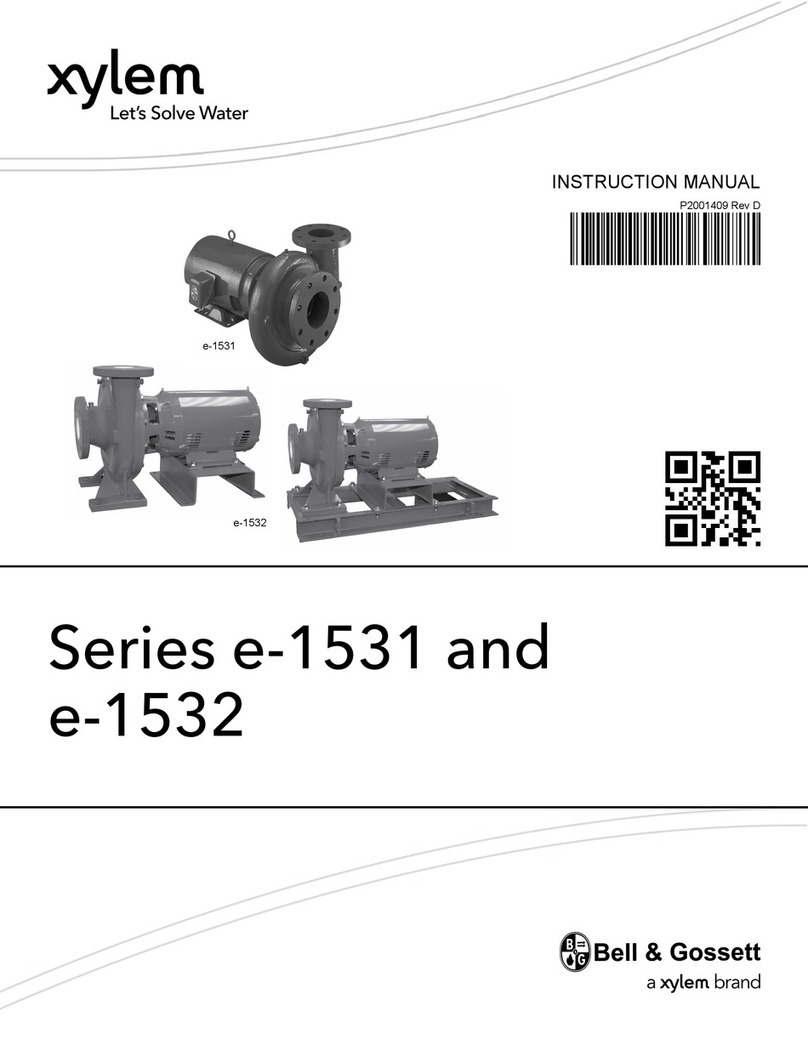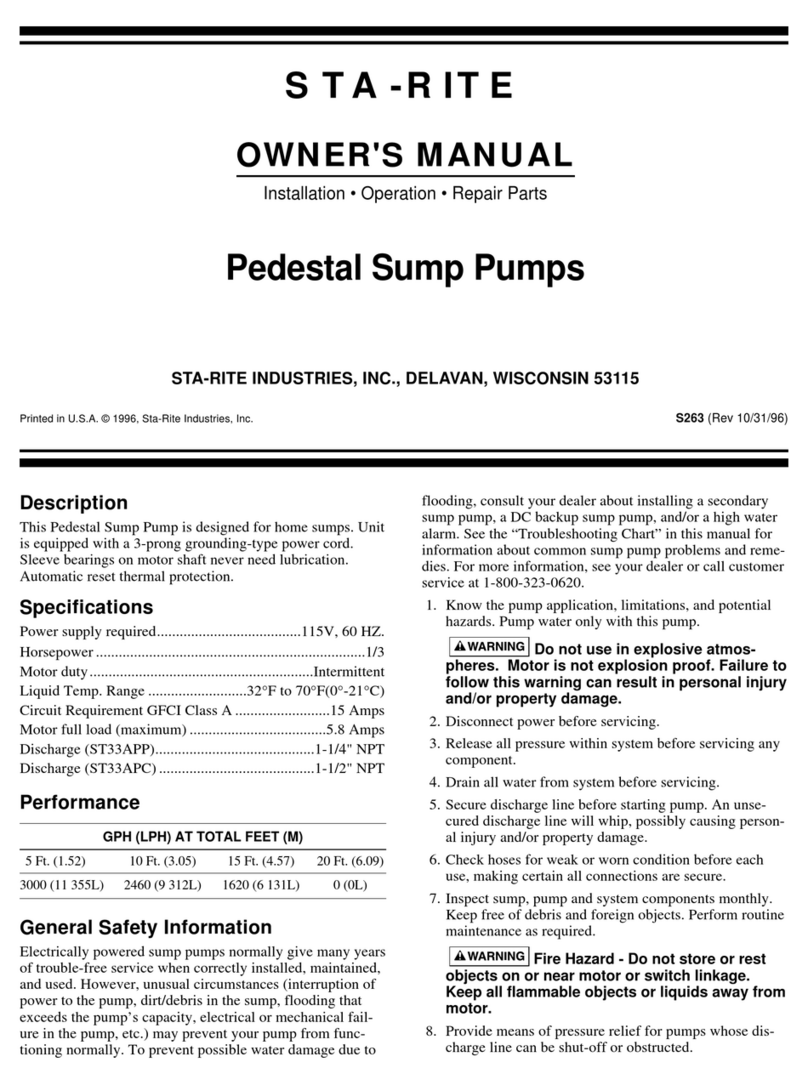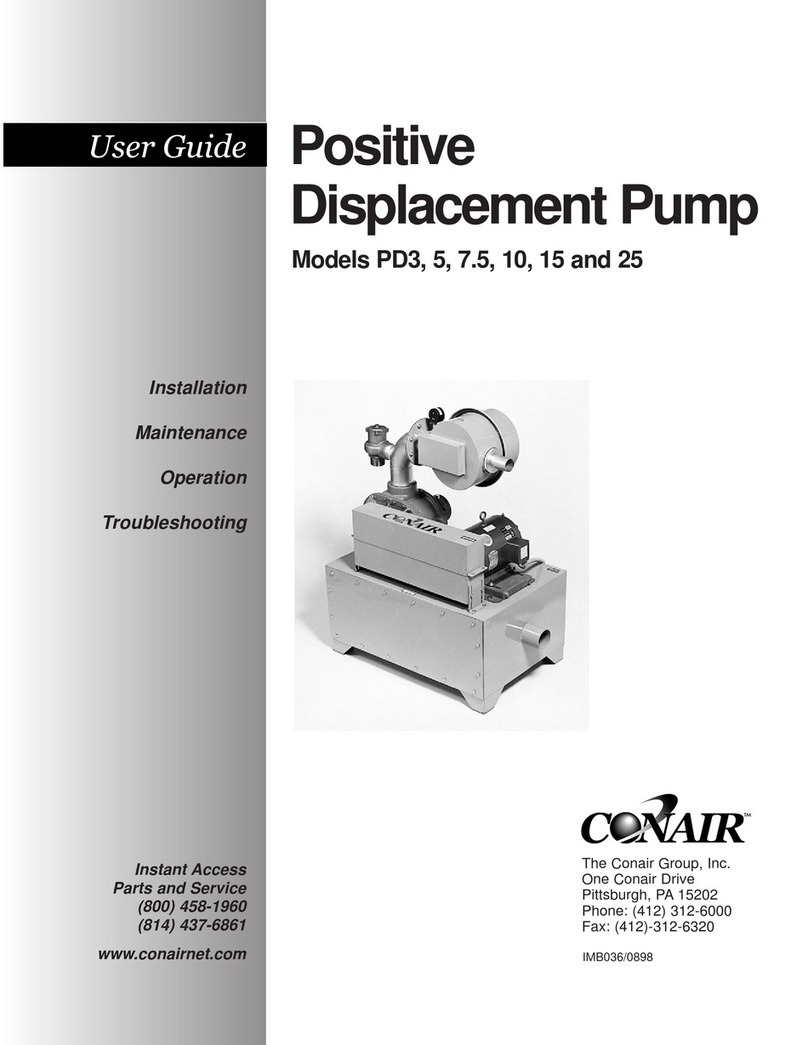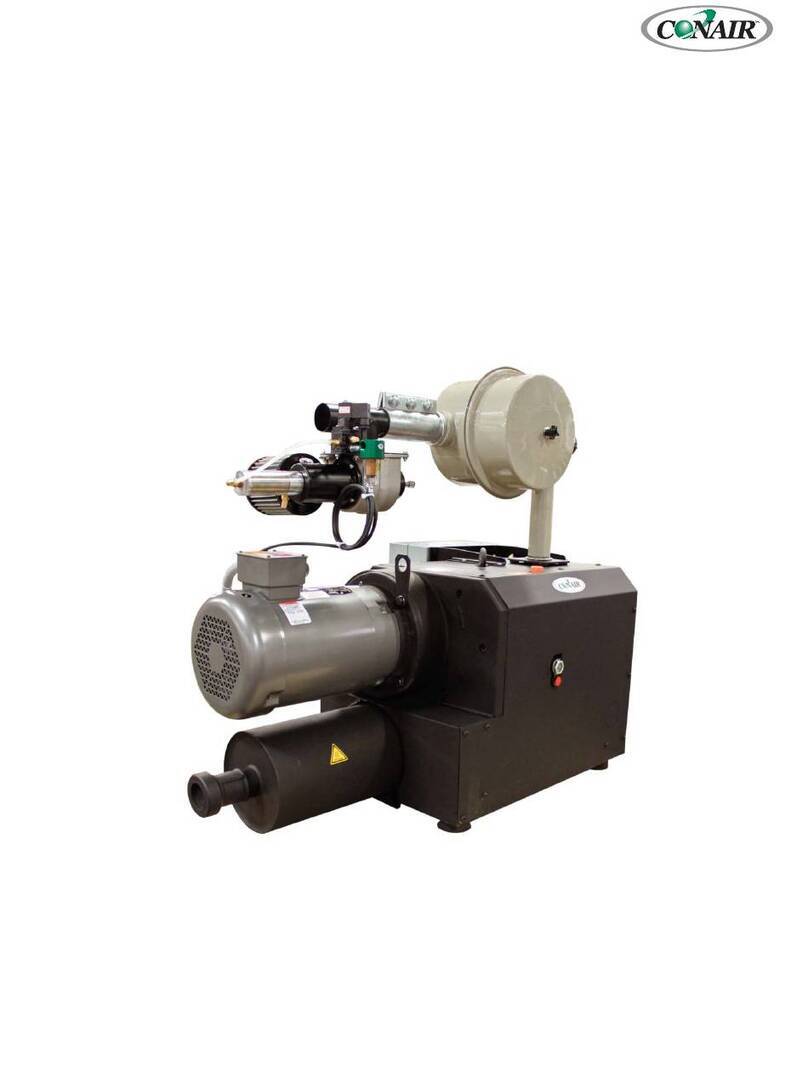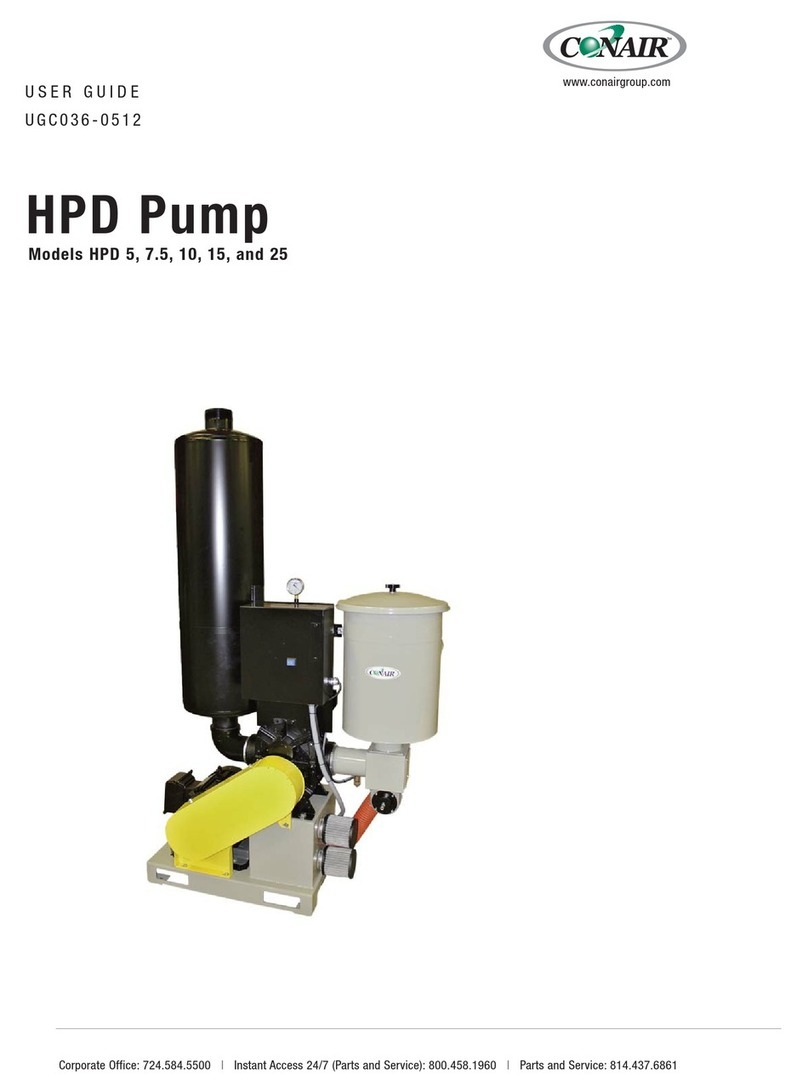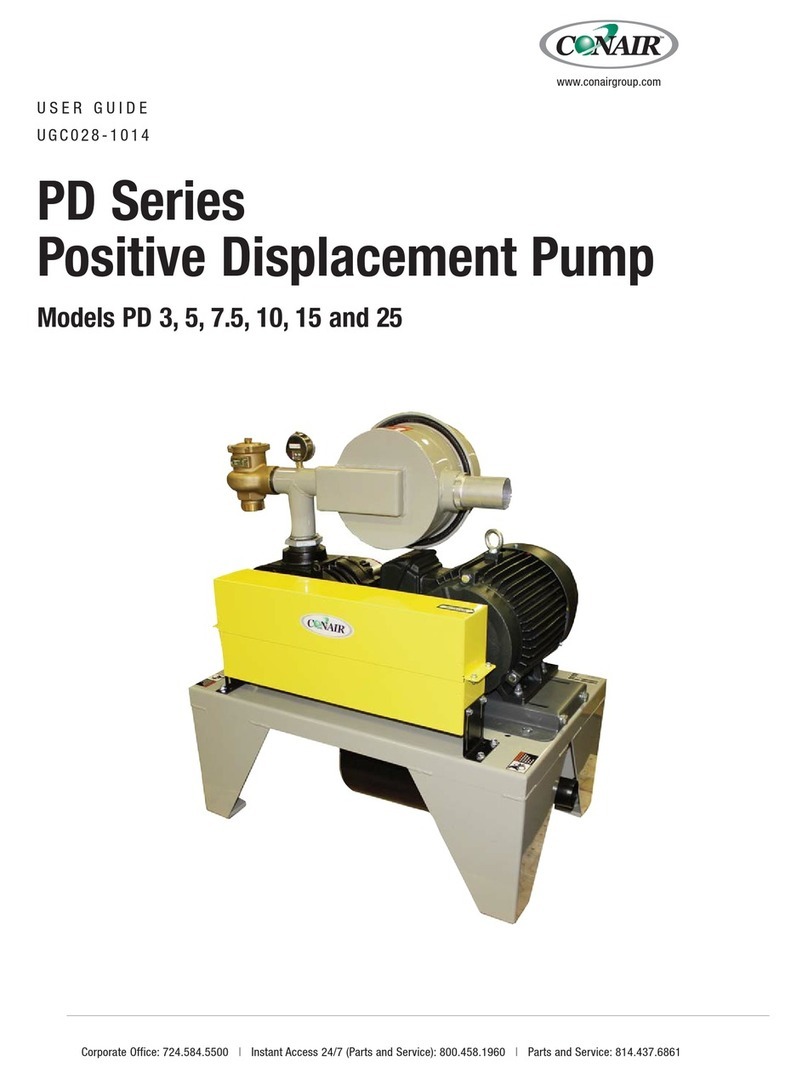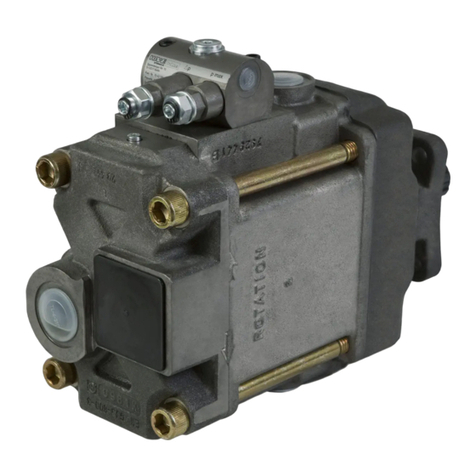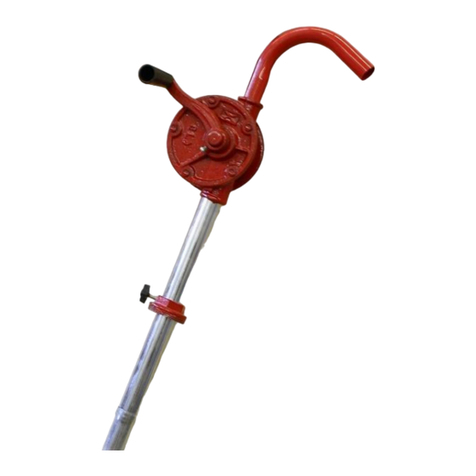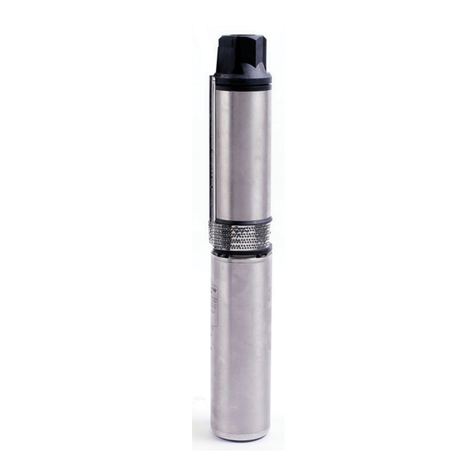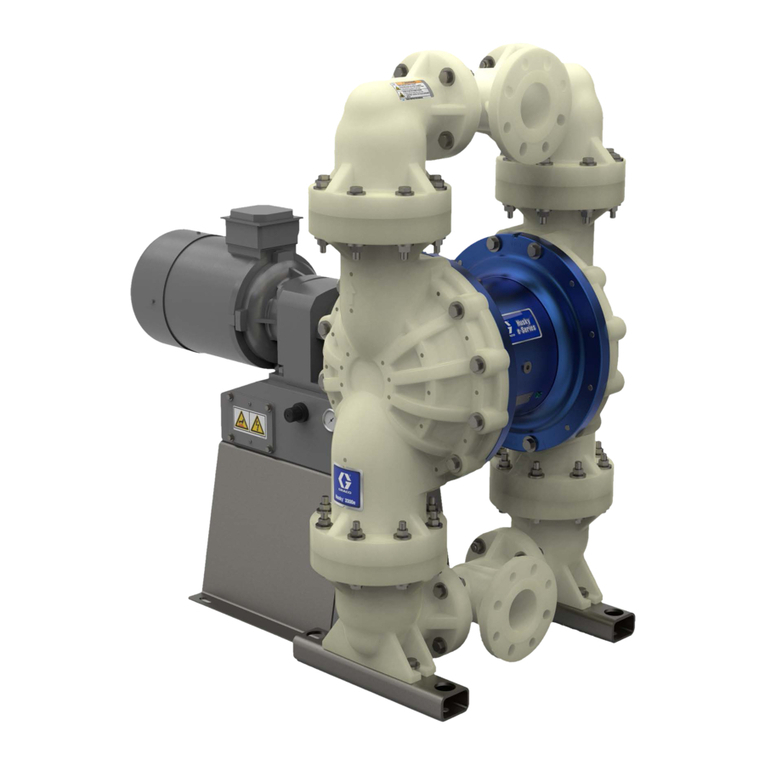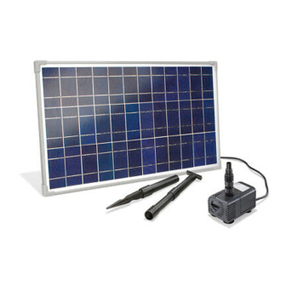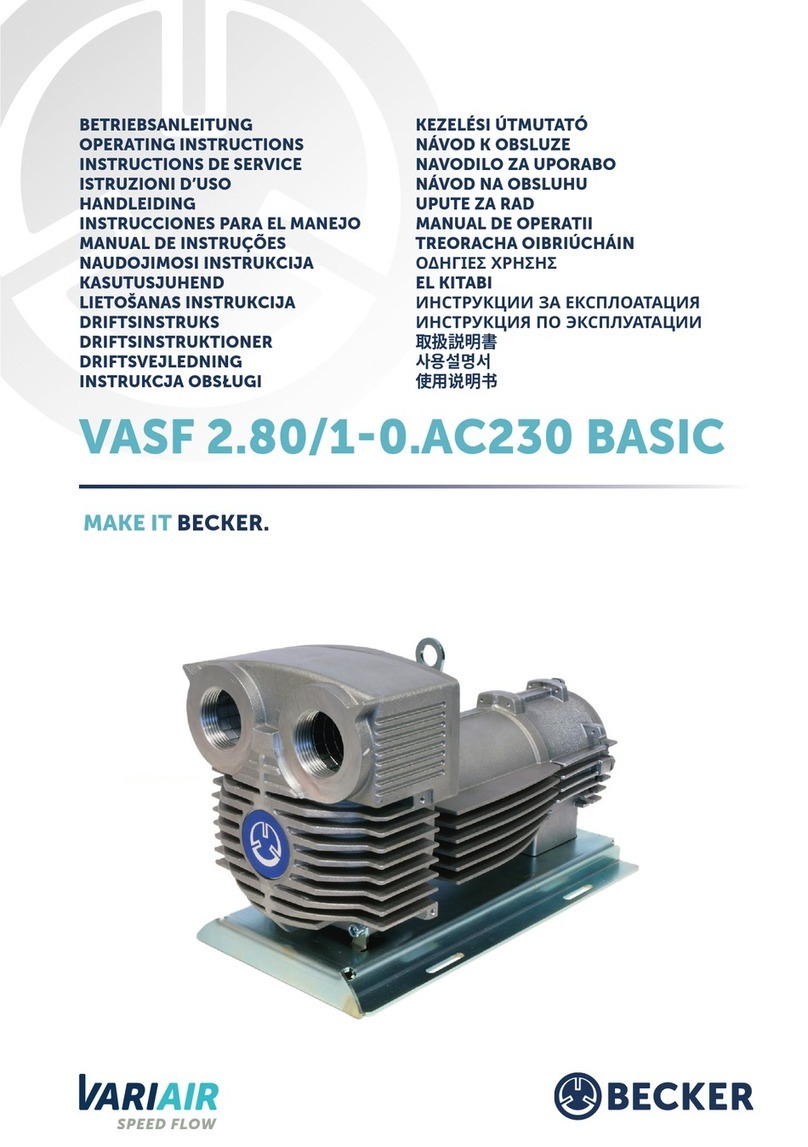What is the RG Pumps?
RG series vacuum pumps are vacuum pump and motor units designed to provide
vacuum power for the conveyance of plastic pellets and regrinds through connec-
tion with vacuum receivers and a dust collector. Control of the pump is provided
by a loading control system, interconnected with the receivers. The pump provides
vacuum energy as indicated on its vacuum gauge, to the vacuum receiver(s) to
allow material transfer. The pump motor operates on 3 phase electrical power con-
trolled by a magnetic starter mounted to the pump assembly. The loading control
provides a start signal to the pump in response to the need for material by the vac-
uum receiver(s).
In addition to various pump and motor sizes, pumps are provided in either single
or dual stage models, indicating the number of suction stages provided to create a
vacuum. Dual stage pumps create stronger levels of vacuum.
Typical Accessories and Options
Vacuum pumps traditionally work directly with Dust Collectors or other filters that
are designed to remove plastic dust from the incoming air line to prevent contami-
nant's from circulating through the vacuum pump. In some cases, operation of the
pump without a dust collection system can create pump damage or a hazardous
condition resulting from flammable or at least low melt point plastic material being
exposed to the elevated operating temperature of the pump.
A common option is an Idle Mode Valve that allows the vacuum pump to remain
operating for a period of time after the run signal from the loading control is inter-
rupted. This option can greatly lengthen pump life by eliminating rapid start/stop
cycles common to many vacuum loading systems. Instead of shutting down, the
pump continues to run for a minimum of five minutes while vacuum pressure is
relieved through a compressed air operated valve that bleeds ambient air into the
vacuum inlet line of the pump. This optional valve is usually shipped loose with
the pump and may be installed anywhere in the vacuum line between the pump
and the dust collector with the supplied compression couplings. The valve gets its
operating signal from a combination Transformer/Idle Mode Control box, mounted
next to and interconnected with the pump starter and clean compressed air must be
provided to the valve solenoid for it to operate.
2-2 l Description



